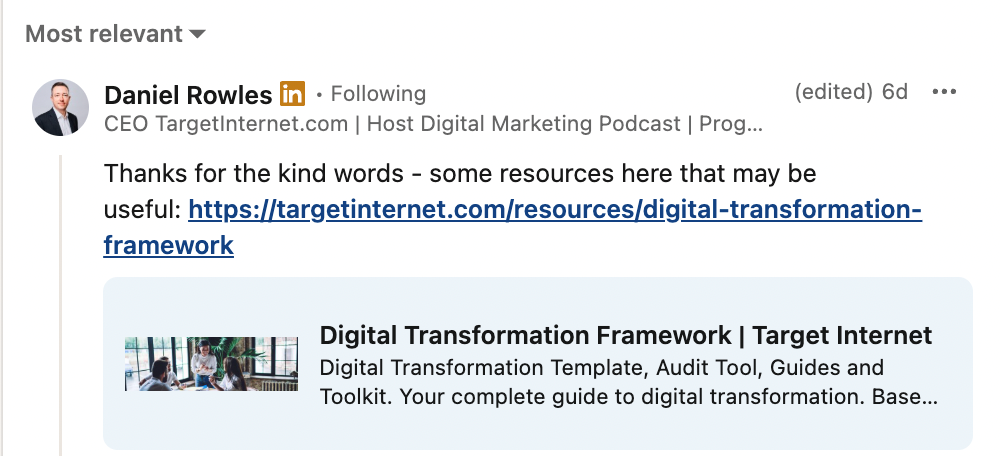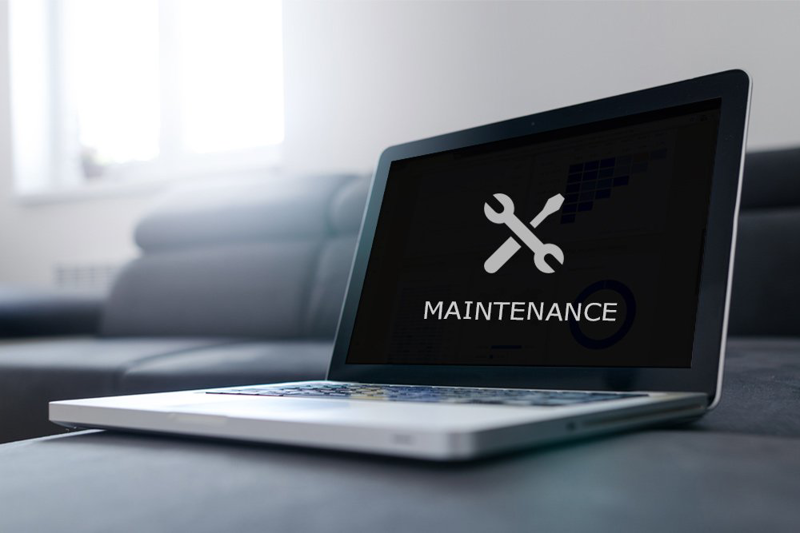Inspired by “Building Digital Culture” by Daniel Rowles & Thomas Brown
Nicholas Negroponte once said, “Like air and drinking water, being digital will be noticed only by its absence.”
That’s exactly what we see every day. Technology keeps moving faster than most businesses can adapt. Digital isn’t something you “do” anymore, it’s the environment you operate in. And if your organisation doesn’t breathe it, the cracks show up fast in your marketing, your sales, and even your team communication.
When we shared our thoughts on LinkedIn, Daniel Rowles the author himself replied and linked to his Digital Transformation Framework. That framework has influenced how we help both small and large companies transform, from Smart Tilt to Delta Force Paintball and SEI Tech Innovation.

Here’s how we’ve turned those ideas into real results.
1. Why Digital Transformation Is More Than Technology
Digital transformation isn’t about chasing every new trend or tool.
It’s about continuous adaptation creating an organisation that can keep evolving.
From the book:
“We are not just trying to carry out a one-off change. We are trying to create organisations that can continuously innovate and change.”
What this means in practice:
- Build systems that evolve, not one-off projects that expire.
- Treat culture as a planned mechanism, not an accident.
- Create loops insight, action, measurement, repeat.
- Focus on outcomes, not platforms.
2. The Digital Transformation Framework That Works
From Daniel Rowles’ Building Digital Culture, the Digital Culture Framework is built around three pillars:
- Essentials (Vision, leadership, agility, environment, and skills.)
- Readiness (Strategy, communication, technology, governance, and structure.)
- Performance (Measurement, innovation, and financial sustainability.)
We use this as our living checklist for every digital transformation project.
3. How We Applied It, Real Client Examples
Smart Tilt (Turning Complexity into a Seamless Digital Journey)
We started by asking the key questions from the SOSTAC model:
- Where are we now?
- Where do we want to be?
- How will we get there?
What we delivered:
- A mobile app to control their smart shutters
- A website which ranks for related keywords
- Hosting support for the portal, website and mobile app
Result: Faster operations, fewer errors, and a team that finally had visibility over performance.
Delta Force Paintball, Digital Growth Through Data
Our goal was to strengthen visibility, streamline operations and create a scalable growth model powered by data.
Our approach:
- Mapped existing marketing and operational processes, then developed internal tools to automate repetitive tasks and improve efficiency.
- Conducted a digital readiness audit using the Building Digital Culture framework to identify weaknesses and growth opportunities.
- Highlighted critical SEO, content and technical gaps that were limiting organic performance.
- Implemented advanced technical optimisation, including schema markup, structured data, and performance improvements.
- Built a location-based content engine supported by analytics-driven insights to target high-intent regional searches.
Outcome:
- Efficient and automated internal processes
- Achieved #1 ranking for all major search terms related to “paintball” and “Delta Force.”
- Delivered a significant uplift in bookings and online revenue.
- Established a sustainable SEO and content system that the in-house team can manage and evolve independently.
4. The Tools That Drive Transformation
Transformation succeeds when the right tools are used for the right purpose.
Here’s what we rely on most often:
Automation and Workflow:
- n8n, Zapier and Zoho Flow for smart, low-code automation.
Infrastructure and Dev:
- Laravel, WordPress, Webflow, and Next.js depending on the project scope.
- AWS and Cloudflare for security and performance.
Payments and Commerce:
- Stripe and Stripe Connect for multi-account payouts.
- Stripe Terminal for physical point-of-sale integrations.
Identity and Security:
- Microsoft Entra for authentication and access management.
Analytics and Reporting:
- GA4 dashboards tied to actual KPIs such as conversions, retention, speed, and uptime.
AI and Ethical Use:
- Custom GPTs and AI tools for task automation, with ethical guardrails to ensure data integrity and avoid IP violations.
5. Purposeful Culture: The Real Competitive Advantage
A culture of agility doesn’t happen by accident.
It’s built through process, trust, and empowerment.
How we nurture it in projects:
- Empower teams to test and fail fast.
- Bring data and insight into every weekly review.
- Build dashboards that everyone can read and not just developers.
- Replace meetings with clear cadences: weekly stand-ups, fortnightly demos, monthly retros.
- Encourage feedback loops between client teams and developers.
6. Stakeholder Buy-In Changes Everything
One of the strongest lessons from Building Digital Culture is this:
Digital transformation fails without stakeholder alignment.
Our process:
- Run stakeholder workshops early to map goals and pain points.
- Score digital capabilities on a 1–10 scale across all departments.
- Identify “friction points” between teams and make them visible.
- Share progress visually, not through reports.
This approach turns potential resistance into shared ownership.
7. A Repeatable Roadmap for Any Business
Whether you’re a startup or a legacy brand, the pattern is the same.
Start small, but move fast:
- Define where you are and where you want to be.
- Run a digital capability audit (Essentials, Readiness, Performance).
- Identify three high-impact, low-effort initiatives.
- Build fast, measure immediately.
- Create visibility through dashboards and internal comms.
- Keep iterating as agility is the destination.
8. What We’ve Learned
From every digital project we’ve delivered, whether it’s for Smart Tilt, Delta Force, or SEI Tech a few truths remain constant:
- Culture outpaces code. A great platform without the right mindset collapses fast.
- Simplicity wins. Clear goals, visible metrics, short feedback loops.
- Leadership must own it. Not delegate it to a “digital” role.
- Experimentation pays off. The faster you test, the faster you learn.
- Digital never ends. It’s a loop, not a project.
9. Our Thanks to Daniel Rowles and “Building Digital Culture”
The frameworks from this book especially the Essentials, Readiness, Performance model and the SOSTAC planning structure are embedded in how we now deliver every digital transformation.
Daniel’s work, and his Digital Transformation Toolkit, remain some of the most practical resources available.
We’ve seen first-hand how the combination of structured thinking and agile delivery can completely reshape how a business works.
If you’d like to see how we apply this framework in real-world projects, or get a copy of our capability audit template, drop us a message.




